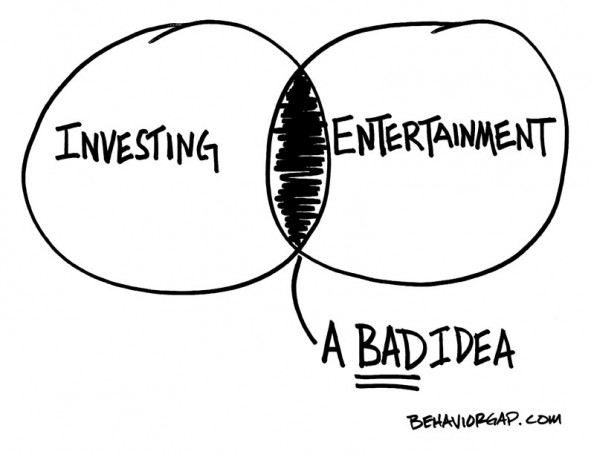By Mark Rylance, CFP®, CeFT ™
I have written to you in the past about the average investor’s proclivity to making poor investment decisions based on emotion. Studies have shown that these emotional decisions not only lead to bad performance results, but really bad performance. In fact the average investor trails the S&P 500 stock index by more than 4% per year. I believe one of the main culprits is the media.
Don’t get me wrong. I know the media is not on a clandestine mission to deceive us into making bad investments, but they certainly aren’t doing us any favors. I’ll pick on CNBC because they are low hanging fruit. How can you not be drawn into shows with titles like Fast Money, Money in Motion, Squawk Box, Options Action, and Power Lunch. These are seriously smart people and it’s really entertaining to watch.
Unfortunately, if you were to sit in front of your TV watching these shows for an entire day, at the end of that day, you would have exactly zero actionable ideas. It’s a simple case of information overload. Truth be told, I love watching Fast Money, but money is not made fast; it’s made methodically with sound discipline. Ask Warren Buffett.
Here’s a simple way to think about the problem:

To be fair the media is only part of the problem. The other part is something we have to take some ownership ourselves, having our ancestors to thank.
Our brains are hard-wired to make us bad investors. Brain research has recently jumped light years ahead through the use of a new technology called functional magnetic resonance imaging (fMRI), which allows us to see directly into our brain. fMRI imaging allows us to see exactly what part of the brain “lights up” given different stimuli.
Scientists are finding that the part of the brain that lights up during emotionally charged events (think Great Recession) is not our logical new brain, but rather the old reptilian brain, which is the emotional control center of the brain. This part of the brain’s main function is to help us determine friend versus foe, or fight or flight. If you mix a fight or flight moment with a situation with a hundred different variables you can start to see how CNBC, who is there to give us as much information as humanly possible, is not good for our financial health.
So how do we at RS Crum handle everything being sent our way? Aside from reading a ton, we also try to methodically sort through the information in an attempt to arrive at the core issues. In our office, we don’t search for certainty. Instead we search for the right questions to ask. Colin Powell famously posed three questions to his staff when confronted with difficult and complicated military decisions:
- Tell me what you know?
- Tell me what you don’t know?
- Now tell me what you think?
We ask a fourth question, “What are the possible outcomes if we are right…or wrong?” When you start asking yourself the qualifier questions, you begin to hone in on potential blind spots, which is where big risks and opportunities lie.
This is a very important investment concept when it comes to reducing volatility and losses in portfolios, as is understanding that when you are 100% certain of something, you leave yourself open to being 100% wrong. To use a baseball analogy, our goal is to be willing to take a lot of pitches and hit a lot of doubles and triples, while letting the CNBC’s of the world swing for the fences in an effort to make their fast money, along with all the strikeouts that come with it.
